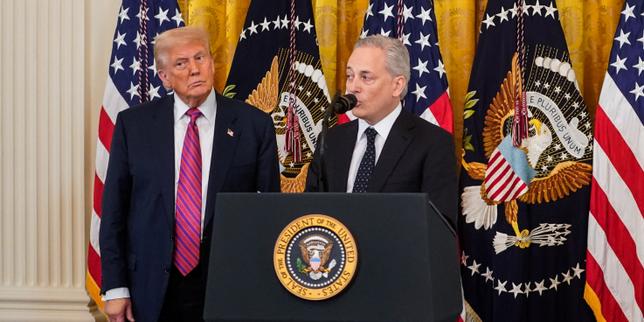

In a series of developments reflecting the dynamic intersection of technology and space, important measures have been announced in the United States for the advancement of artificial intelligence, and a close but safe flyby of an asteroid near Earth. These events highlight humanity’s continuous journey of exploration and innovation within our technological and cosmic realms.
In a significant push towards technological advancement, the U.S. government, under the leadership of former President Donald Trump, has introduced an ambitious plan designed to accelerate the growth of artificial intelligence within the country. Recognizing the immense potential of AI technologies for various sectors, the White House has identified approximately 90 specific measures aimed at fostering innovation and expanding AI capabilities. These measures are thoughtfully structured into three main pillars. Although specifics of these components are still unfolding, they collectively signal a strong commitment to maintaining a competitive edge in AI development and its responsible exportation worldwide.
The plan underscores a strategic approach to nurturing collaborations between federal entities, private enterprise, and educational institutions to integrate AI seamlessly into diverse aspects of societal function. As these technologies continue to evolve, there is a mindful emphasis on ensuring they are developed and applied in a manner that prioritizes ethical standards and practical utility, potentially serving sectors ranging from healthcare to national security.
On the celestial front, the watchful eyes of space agencies, notably NASA, are ensuring Earth’s safety with continuous monitoring of near-Earth objects. A recent event drawing interest involves an asteroid, roughly the size of an airplane, which is projected to safely pass close to our planet next week. This celestial wanderer is being carefully observed, reaffirming the expertise and diligence of space agencies in anticipating and understanding such cosmic events.
The assurance from NASA that this asteroid poses no threat is a testament to the meticulous preparation and technological capabilities in place, allowing humanity to not only detect but also mitigate potential risks long before they approach Earth’s vicinity. The agency’s commitment to ensuring planetary safety fosters a sense of collective security, enabling us to marvel at these cosmic phenomena without apprehension.
These developments in both AI advancement and cosmic monitoring exemplify how humanity’s pursuits in technology and space exploration are intricately interconnected. While the AI initiative represents a deliberate step towards harnessing the power of advanced computation to improve human life and shared understanding, the ongoing vigilance in celestial monitoring serves as a reminder of our place within a vast, continually shifting universe.
Looking ahead, there is immense potential for these initiatives to inspire innovation, creativity, and a deeper understanding of both our immediate environment and the cosmic expanse beyond. With technological advancements in AI, we can anticipate more personalized, efficient solutions in various domains, ultimately aiming for a future where technology and humane considerations go hand-in-hand. Simultaneously, the diligence in monitoring asteroids and other space phenomena enriches our appreciation for the cosmos, instilling a deeper fascination and respect for the shared universe we navigate.
These events, in their convergence of terrestrial aspiration and space exploration, reflect a mindfulness towards progress that honors the interconnectedness of all things. In pursuing advancements responsibly, they nurture a vision of a future where technology, space, and humanity harmonize with each other in a positive, enriching tapestry of exploration and innovation.
Source: {link}
